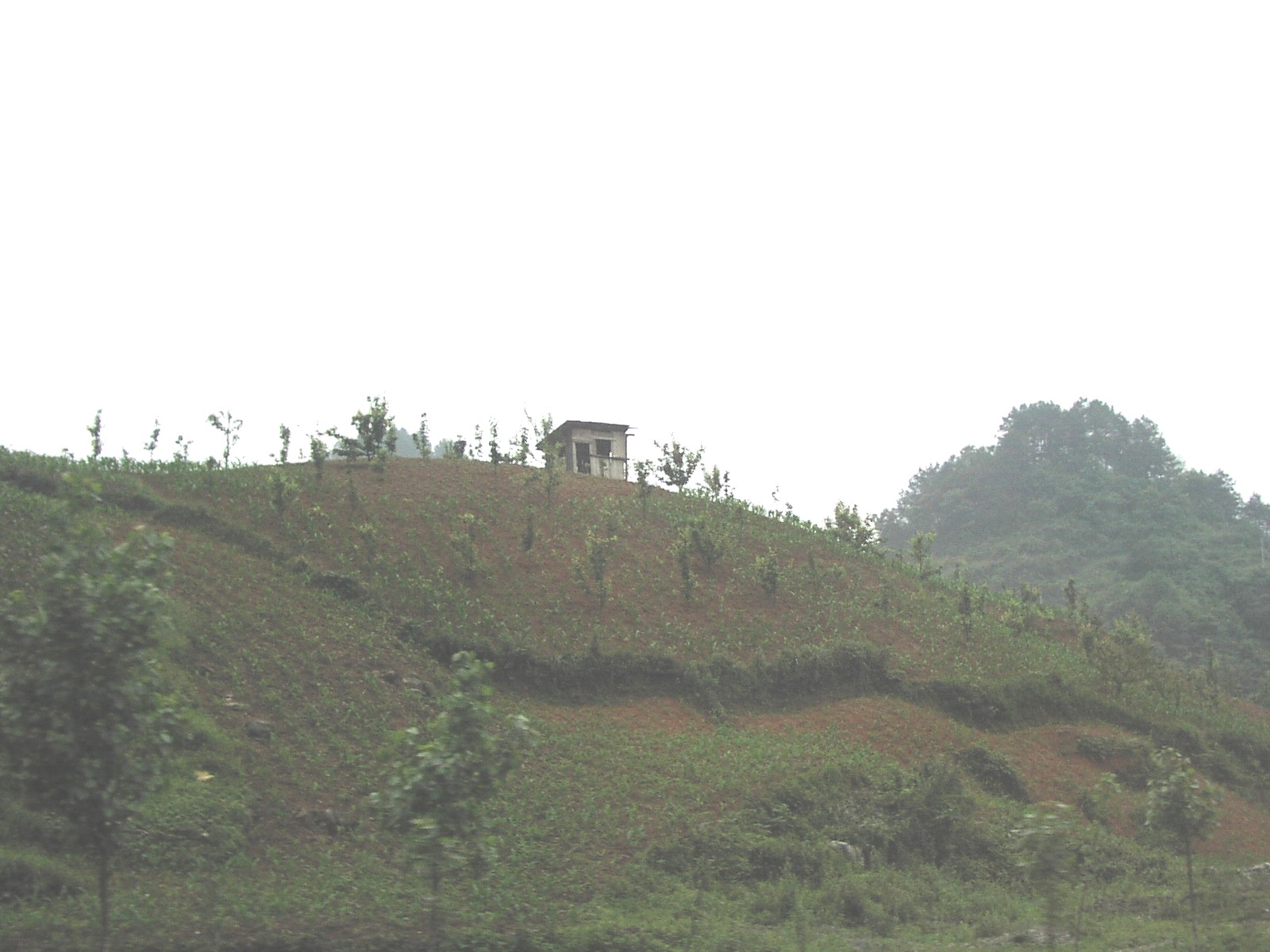
Sloped corn patch between Guiyang and Kaili.
In 2002, in Sichuan province, I was startled at the steepness of some of the slopes on which farmers were growing crops, especially corn. I was not as distressed as I should have been. It was not until I saw the same thing in Guizhou province in May 2005 that I really started to think about the amount of topsoil that must be eroding away from these steeply sloped fields. The corn plants did not constitute a vegetative cover adequate to hold the soil in place. I saw this once or twice west of Guiyang; I saw it a lot in the areas east of Guiyang through which we drove:

Sloped corn patch between Guiyang and Kaili.
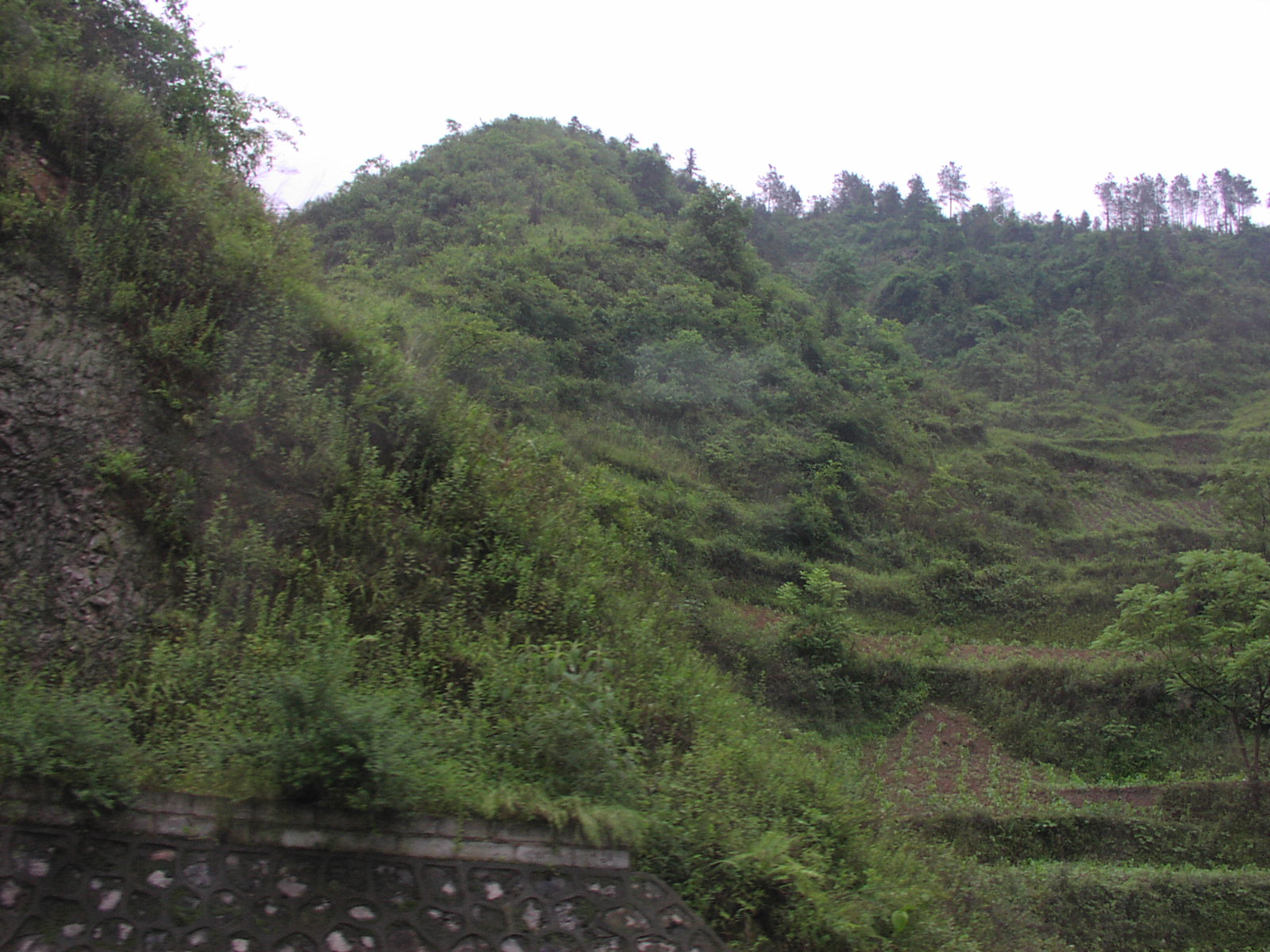
Sloped corn patches between Guiyang and Kaili.
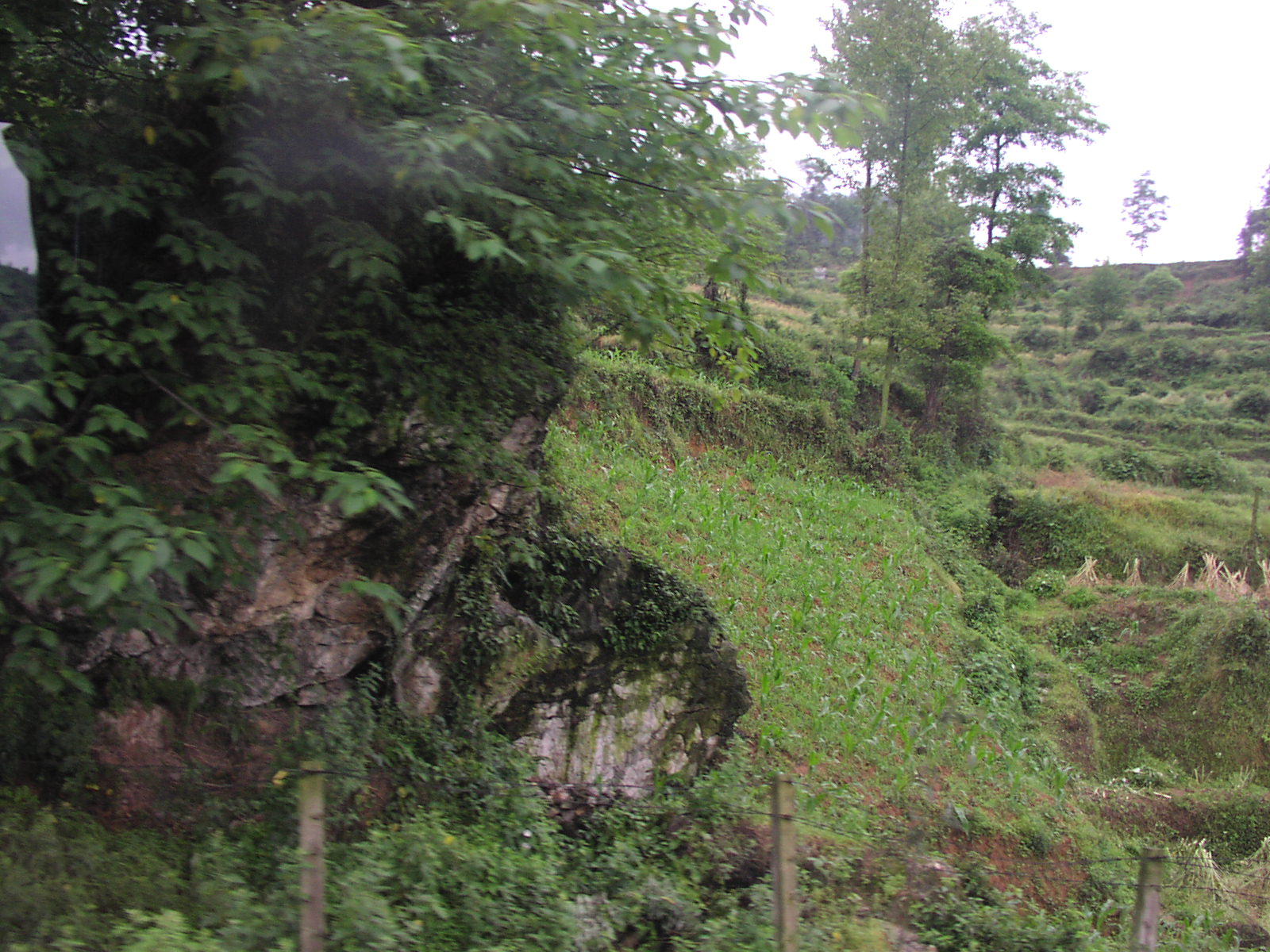
Sloped corn patch between Guiyang and Kaili.
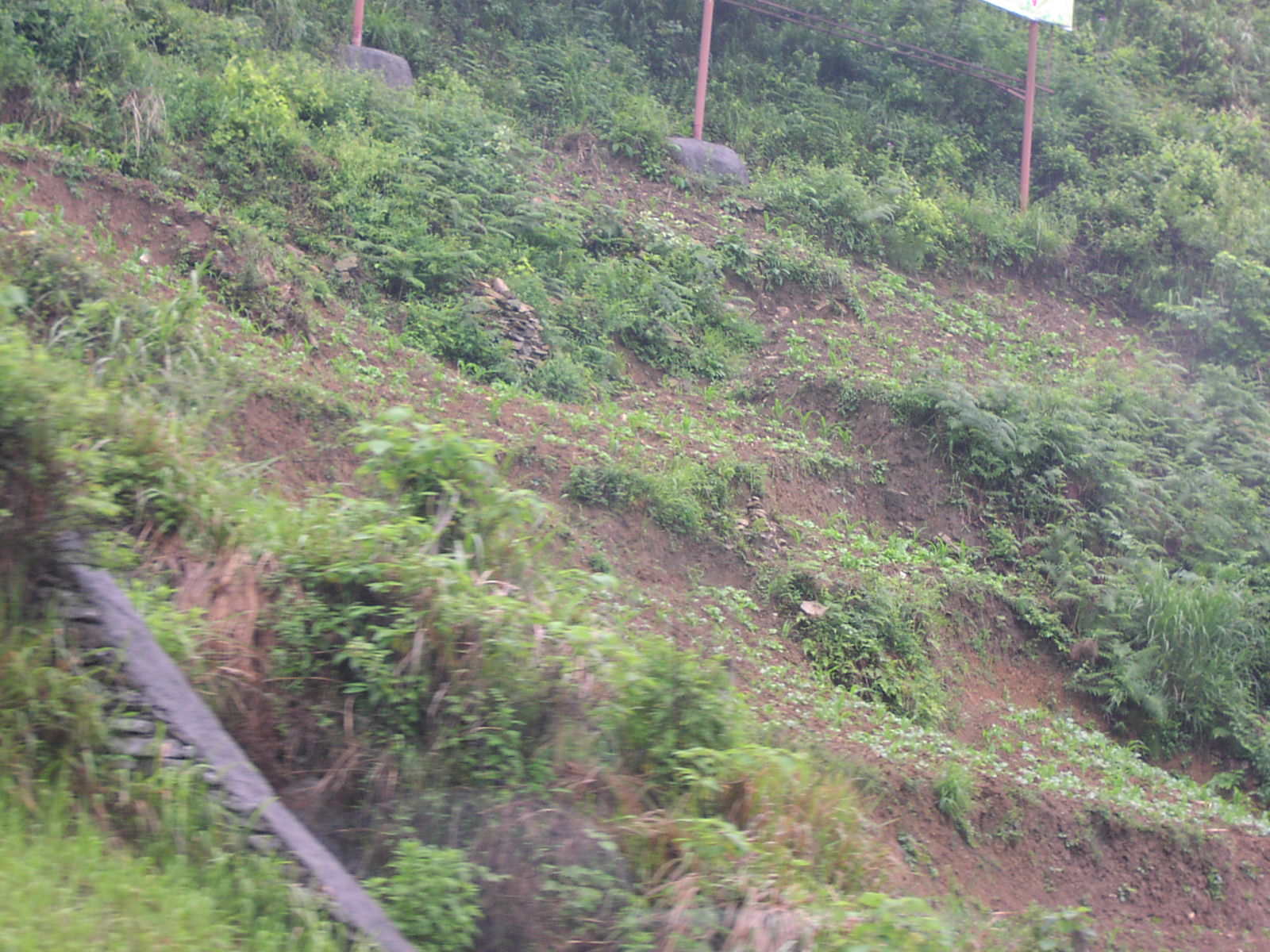
Sloped corn patch between Guiyang and Kaili.
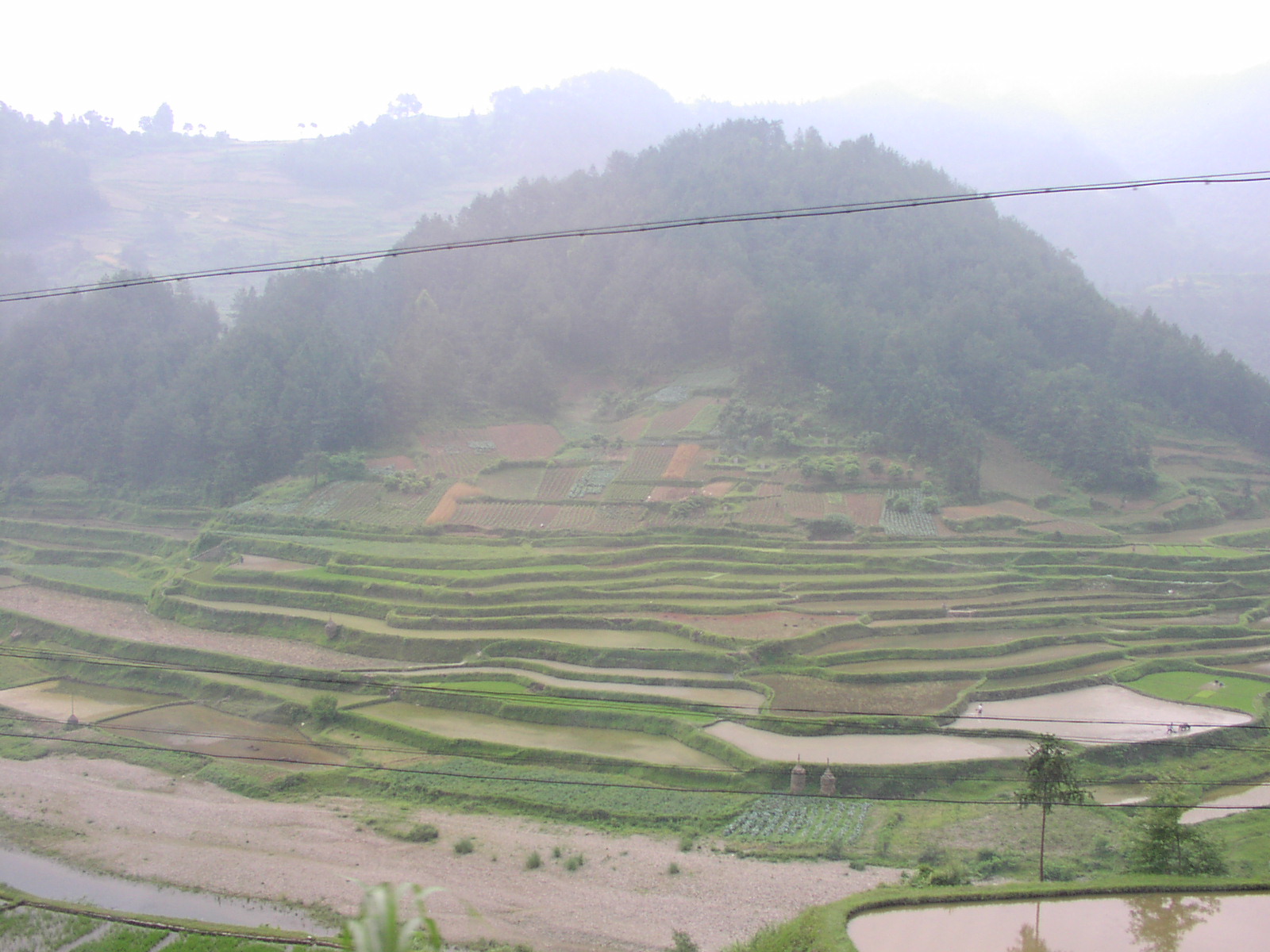
Terraced fields near the bottom of a hill, and unterraced, sloping fields higher
up the hill. This was in the area north of Kaili, where I repeatedly saw this pattern (see my photos of
Lengde
for other examples of it).
I was deeply relieved not to see the same in the areas of Yunnan we visited. In two days of fairly extensive drives through the countryside north of Lijiang, in the western part of Yunnan near the headwaters of the Yangzi (Yangtse, Chang Jiang), I saw only one steeply sloped corn field, and it was a rather small one.
We were told that afer disastrous floods on the Yangzi in 1998, there had been a major effort to restore forests around its headwaters. Part of this was a policy of shifting land from agriculture back to forest. Affected peasants have been paid subsidies, and also helped to shift to crops that would not cause erosion, such as mushrooms and grapes. This policy certainly was having some effect, judging from what I saw. Of course it is possible that the policy has been less enforced in areas that are not in sight of a road.
Another part of the policy was a widespread ban on logging. One community that was hard hit by the logging ban was given permission to change its name to Shangeri-la, in an effort to assist its tourist industry.

North of Lijiang, there were areas like this covered with young spruce trees. We were told the
seeds had been dropped from aircraft.
In Tibet, the government has been planting trees extensively in recent years.

Partly this is to control wind
erosion. Winds can pick up soil and sand from the dry, exposed valleys and deposit them in large drifts against
the sides of the mountains, as seen here.
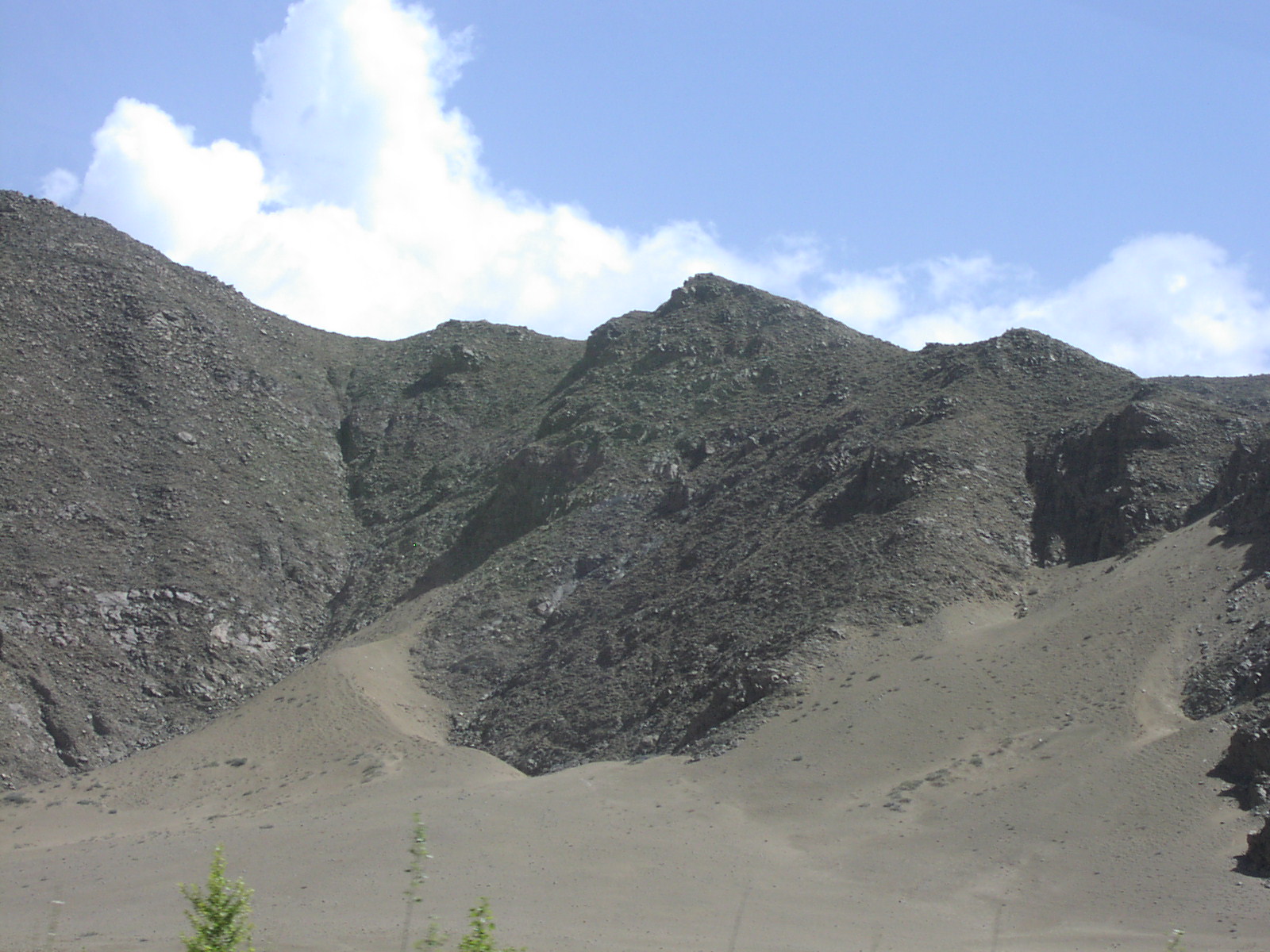
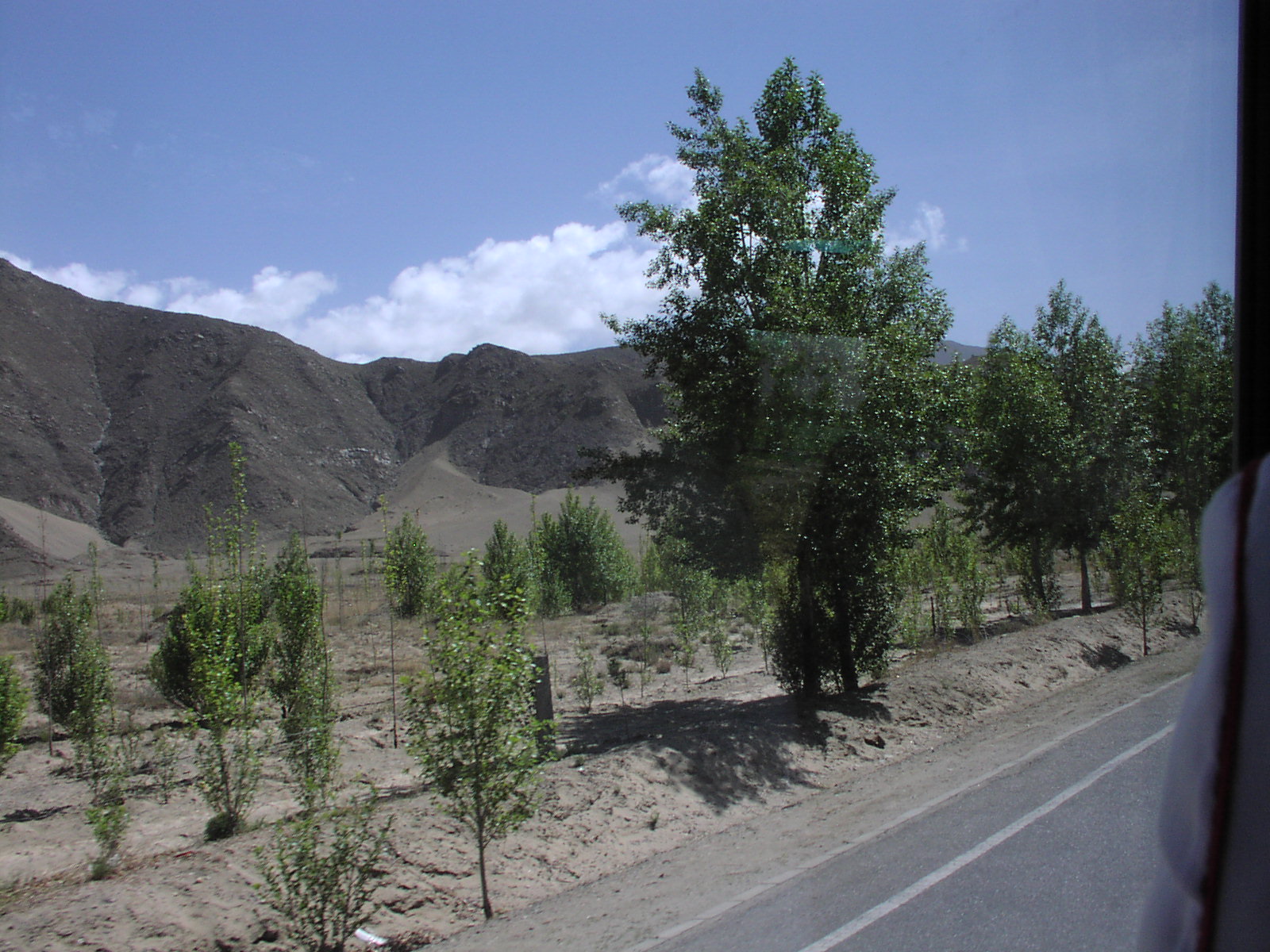
Most of the recent planting has been scattered, in small groups and in tree lines along the roads.
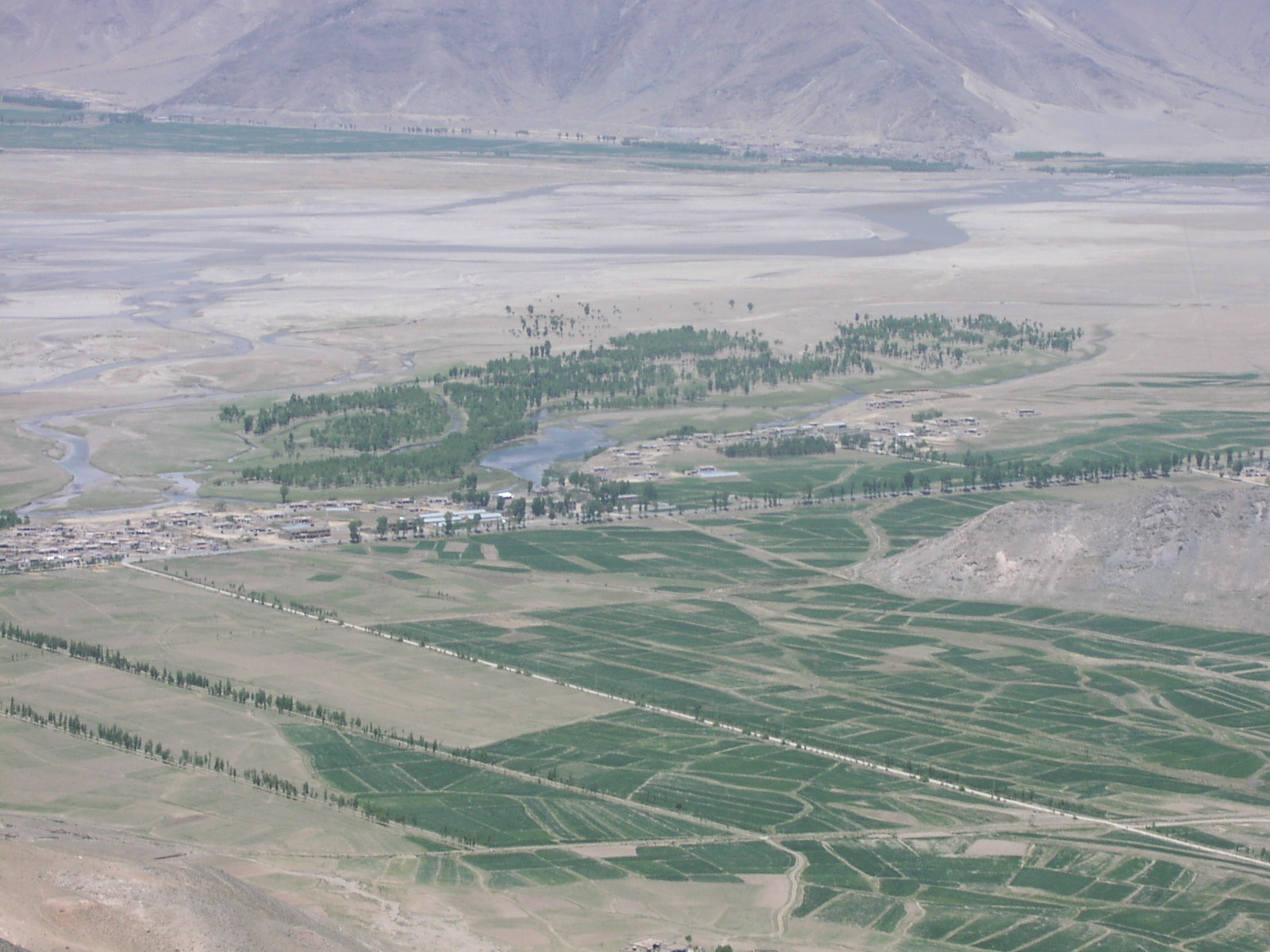
Valley of the Lhasa River, upstream from Lhasa
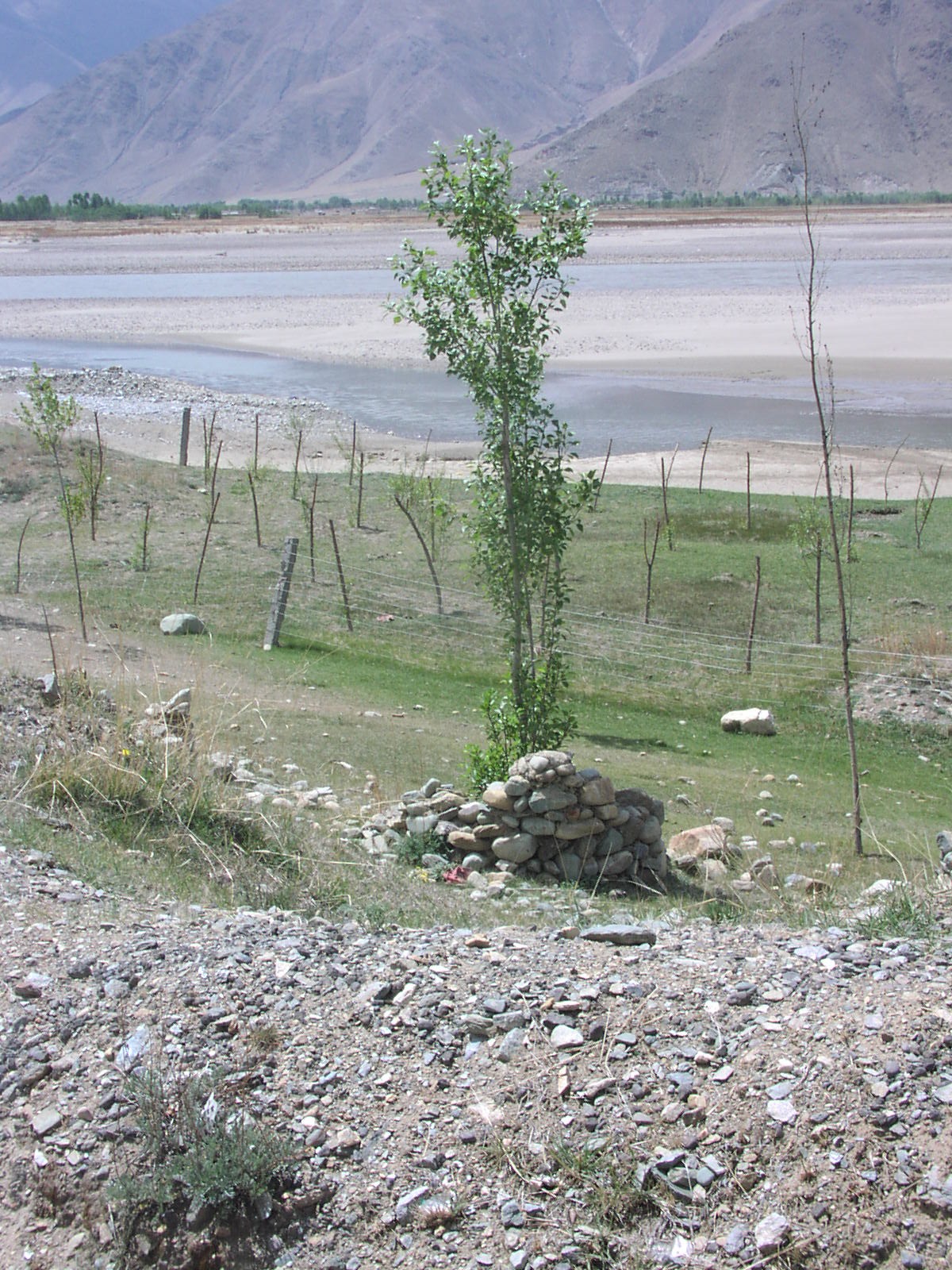
I am not sure what protective function this little cairn of rocks around the base of a recently
transplanted tree was supposed to perform, but it was in an area (along the Lhasa River, upstream from Lhasa) where
the trees clearly needed protection; some had not survived after transplanting.
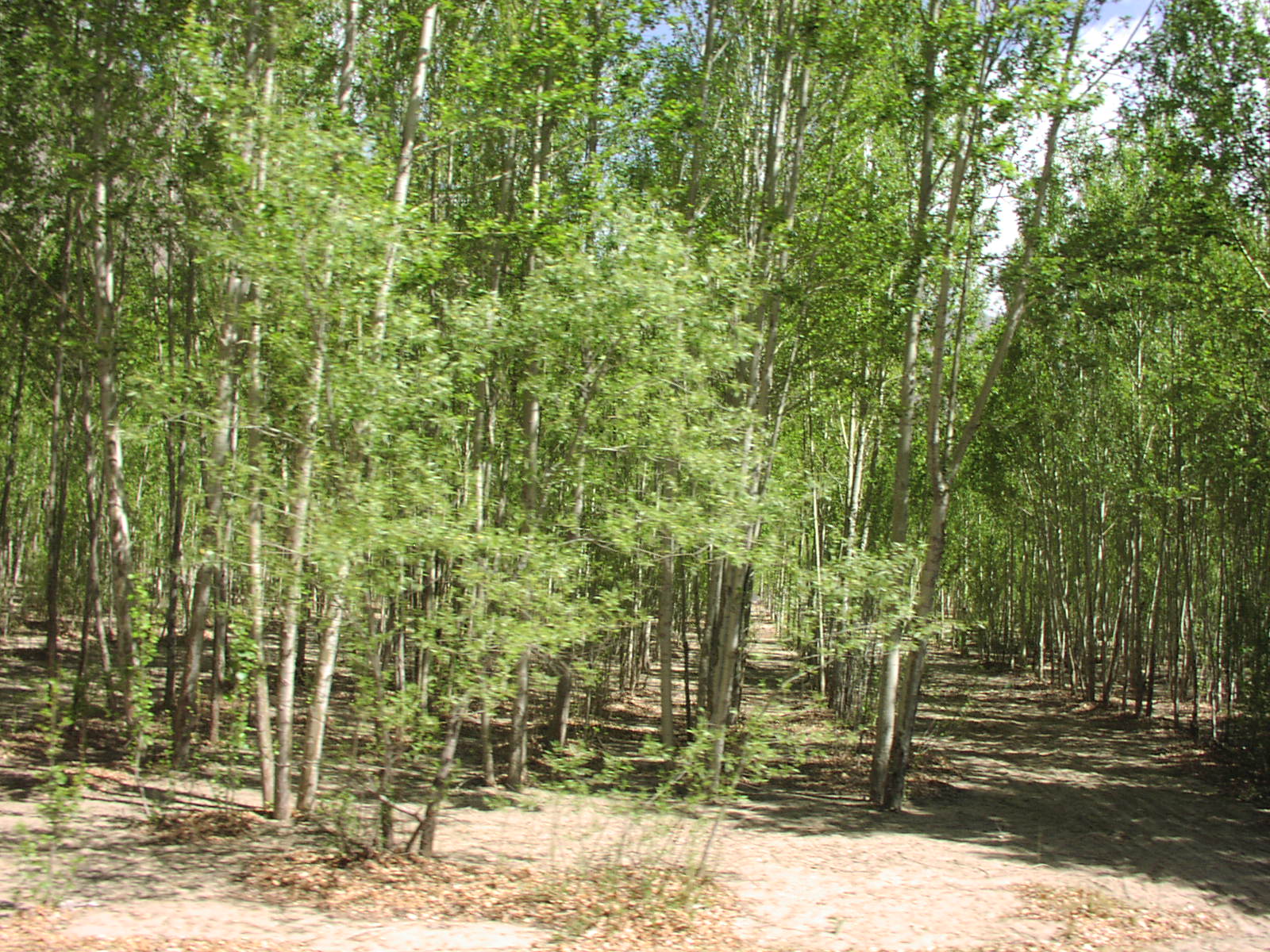
Occasionally trees are planted over extensive areas. This little wood is clearly artificial (note that
the trees are in rows).
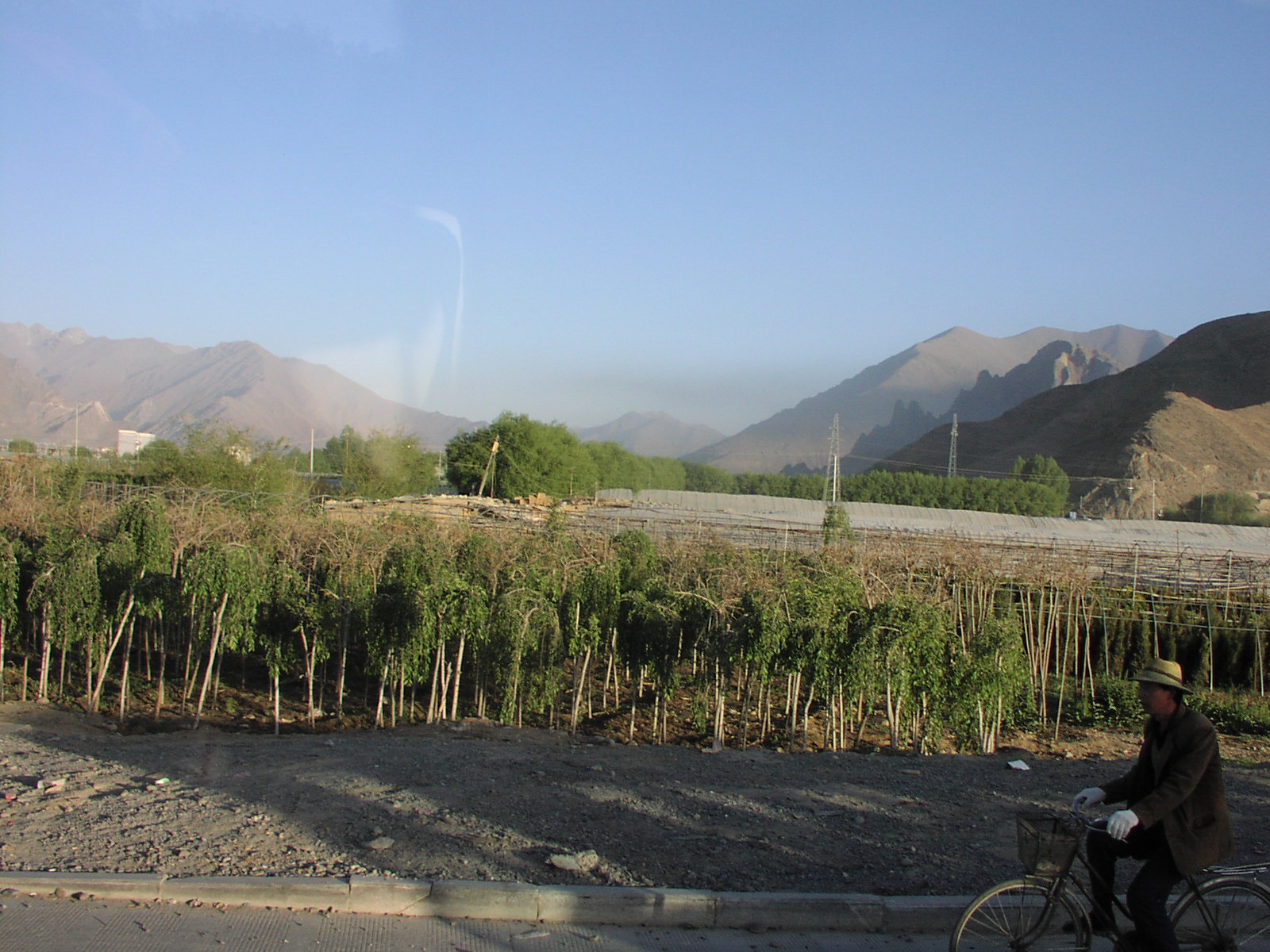
On the southwest edge of Lhasa was an extensive complex of nurseries, growing trees to be
transplanted for these reforestation projects.
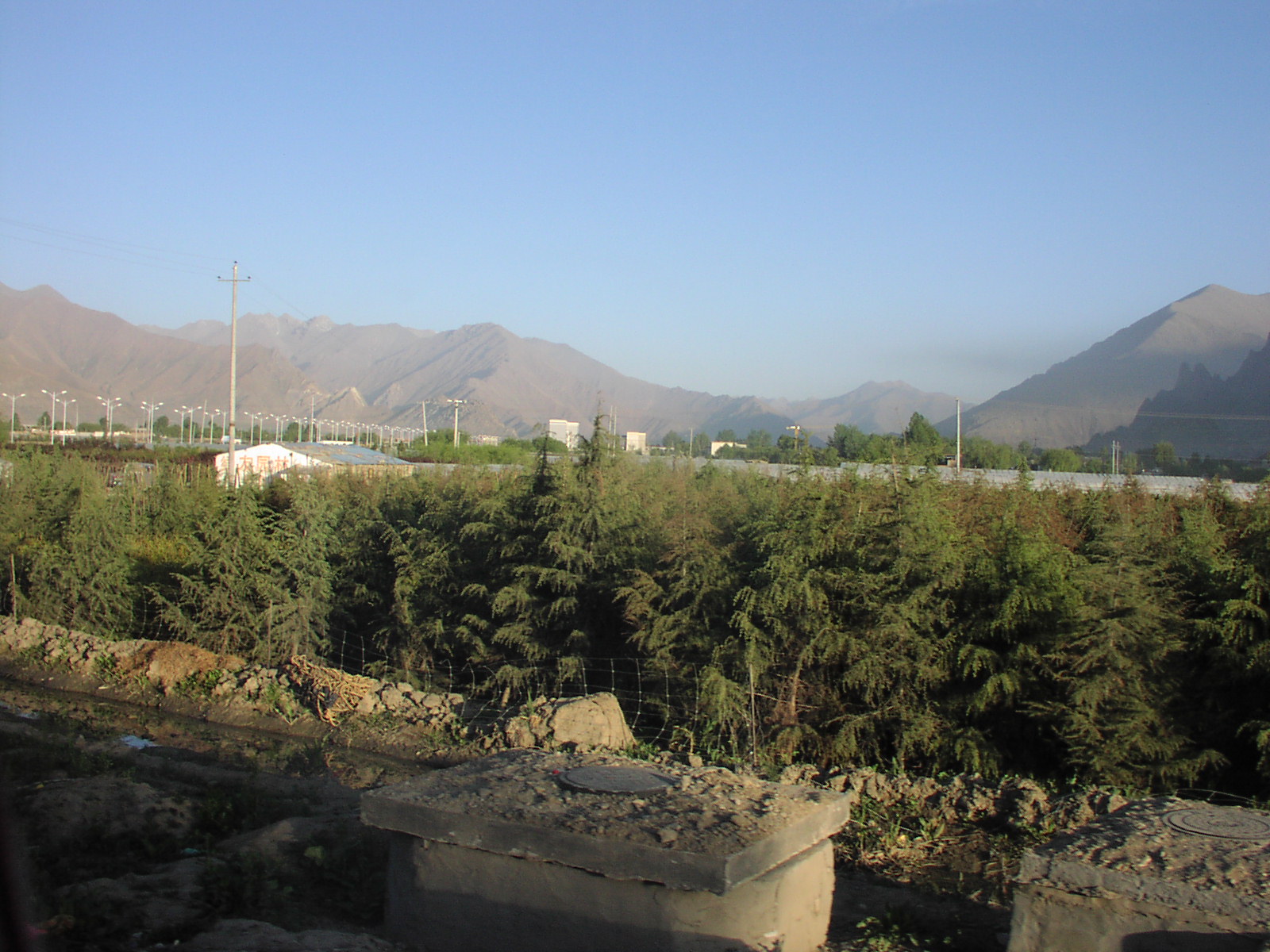
Copyright © 2005, Edwin E. Moïse. Revised June 15, 2005.